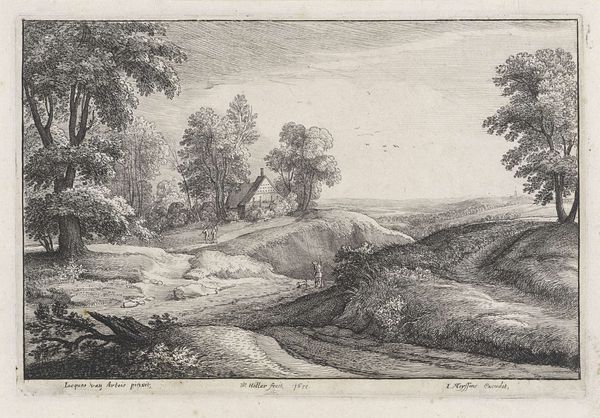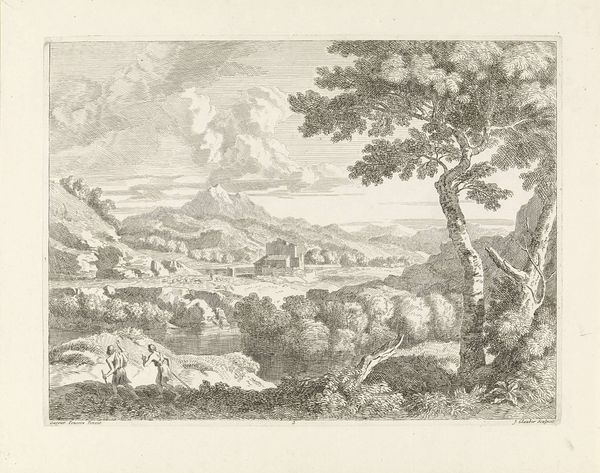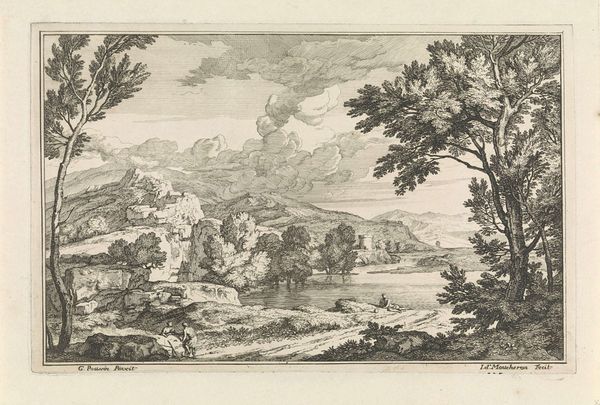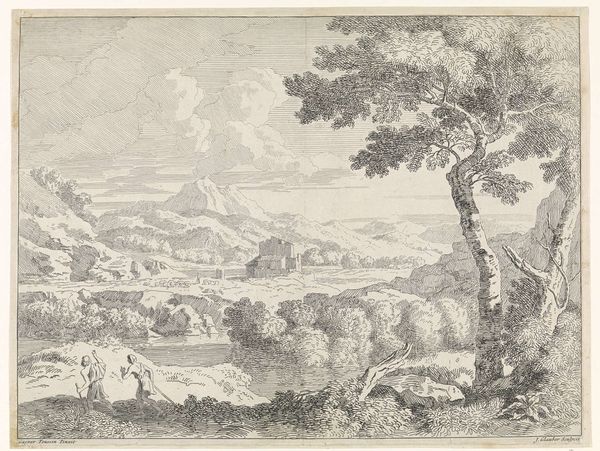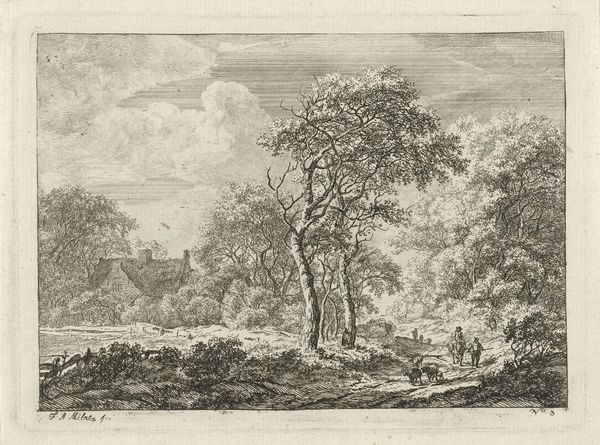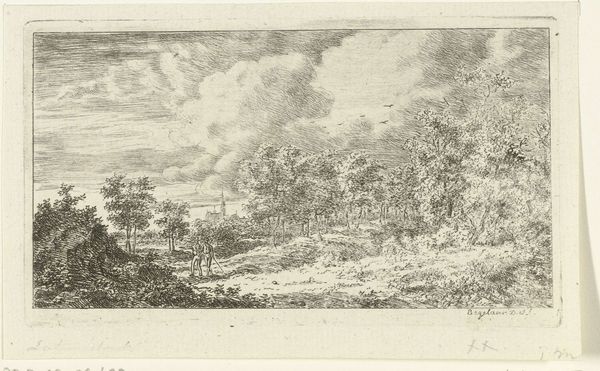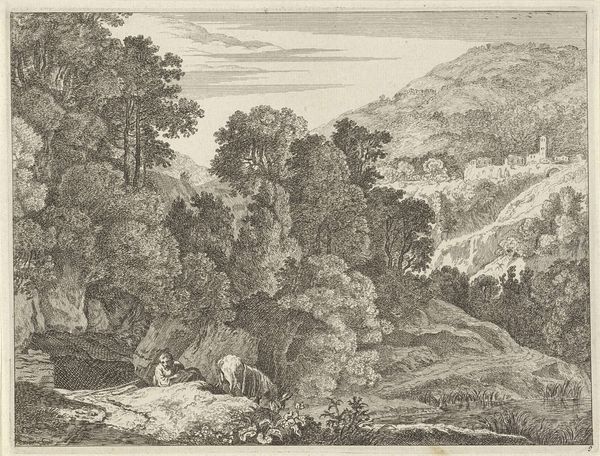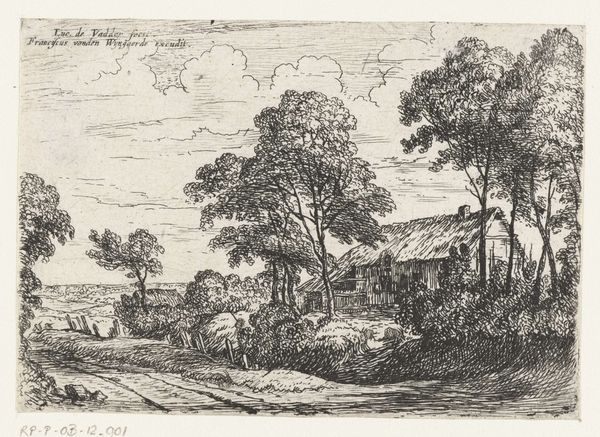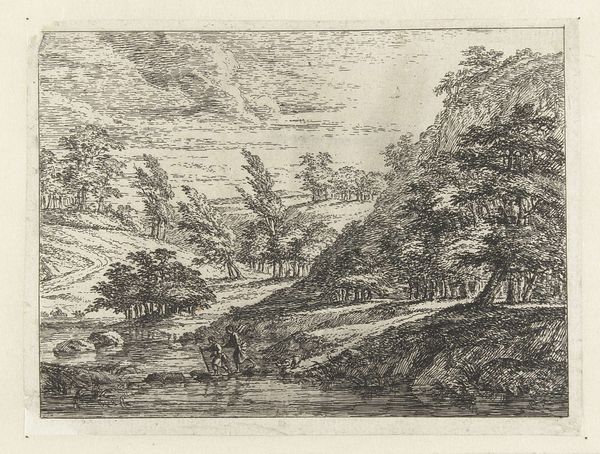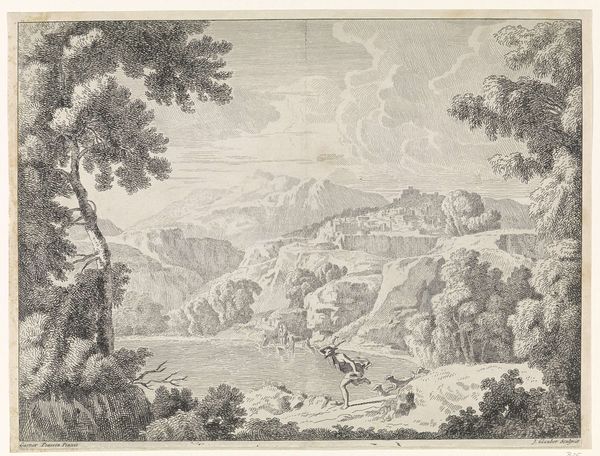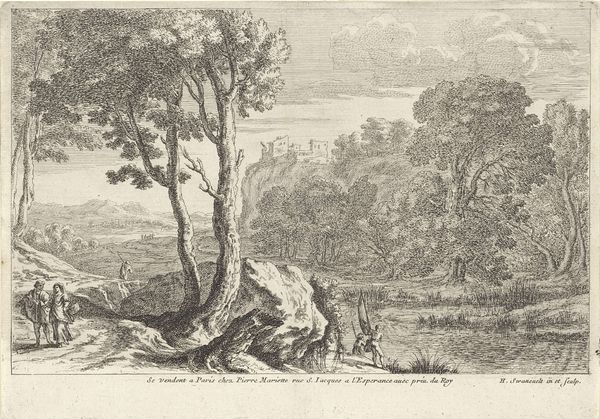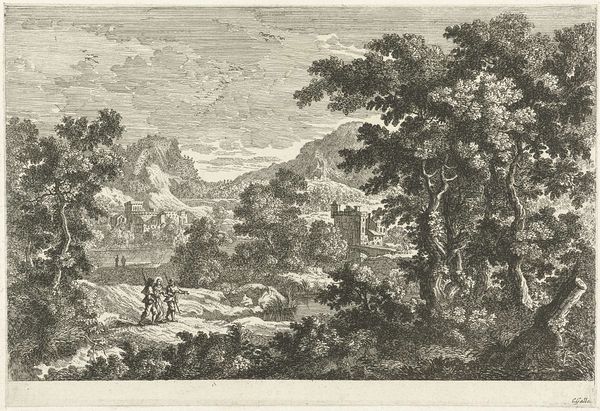
etching
#
baroque
#
etching
#
landscape
Dimensions: height 294 mm, width 392 mm
Copyright: Rijks Museum: Open Domain
Curator: Here we have "Landschap met herders," or "Landscape with Shepherds," an etching created sometime between 1656 and 1726 by Johannes Glauber. The landscape, while beautiful, feels somewhat barren, almost melancholic. What are your initial impressions? Editor: I see that desolation too. But what immediately strikes me are the paired trees that frame the composition. To me, they symbolize something akin to a threshold, inviting—or perhaps trapping—the viewer within this meticulously rendered landscape of class divides and labor. Curator: An astute observation. Beyond just the scenery, notice how the reclining figures evoke classical pastoral themes, but also perhaps something more subversive. Who are they, truly, these 'shepherds' taking repose? Are they symbols of leisure or the victims of it? Consider the socio-political implications of this idealized rural life, knowing that during this period in the Netherlands and across Europe, life for agrarian workers was not easy and that access to land was a significant point of contention. Editor: I can also't help but notice that, set against the backdrop of the landscape itself and the building, the prone bodies carry strong associations with images of reclining gods, heroes and river gods and point, to me, towards an evocation of Netherlandish identity as a modern civilization in this era. How do you see this image and those historical relationships reflected in the construction of national identity? Curator: It is easy to suggest that the people and environment are a manifestation of Baroque style romanticization of the countryside and it's a complex symbol that can be perceived with an understanding of historical contexts, in which the artist's view on nature could reflect or challenge political and economic systems and societal ideals of rurality as a site for the convergence of labor, the natural world and leisure, pointing towards the relationship to land, nation and identity during Johannes Glauber's period. Editor: It’s amazing how etching can convey such weight. It's this sense of the intersection between timeless symbolism, historical conditions, and social justice, which truly grips me. Curator: Agreed. And it highlights how art remains profoundly linked to history and identity and can open up broader discussions across eras, contexts, and human experiences.
Comments
No comments
Be the first to comment and join the conversation on the ultimate creative platform.
